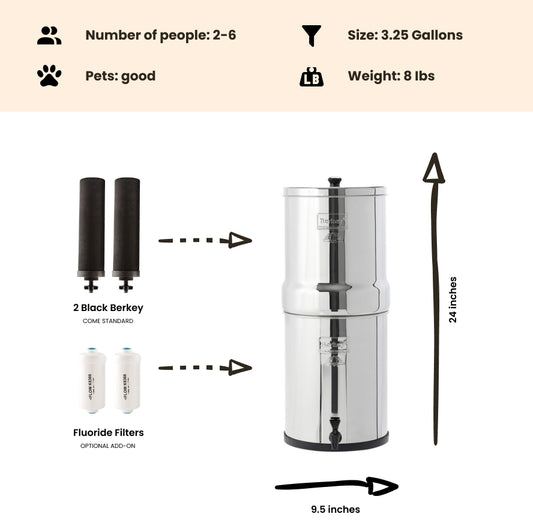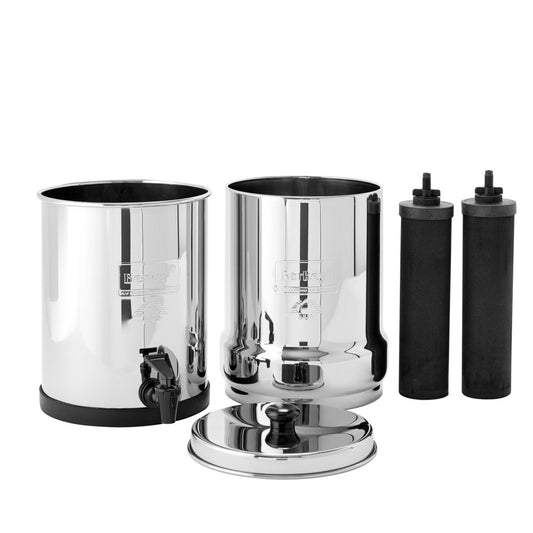Drought and Drinking Water Safety
By Dan DeBaunShare
Of course drought affects the quantity of water available, but no matter the source of your household drinking water, prolonged drought conditions in the United States also pose a threat to water quality. As water levels drop and the mercury rises, taste and color can be affected, bacteria and algae can grow, and the concentration of drinking water contaminants increases. Unless filtered by a water utility or home purification system, the quality of the water in your glass could suffer.
Drinking Water Taste and Appearance Affected by Drought
When drought-stricken areas do get rainfall, extremely dry soils do a poor job absorbing the sudden water influx and more than usual simply runs into storm sewers, rivers, and streams. Rain runoff picks up sediment, as well as pollutants and trash. The resulting particles become suspended in the water, giving it a cloudy appearance known as turbidity, affecting taste and smell as well as appearance.
Wichita Falls, Texas, is getting significant complaints from customers about unpleasant drinking water this summer. Utilities Operations Manager Daniel Nix concedes some people are finding their tap water less than palatable but asserts that it is still safe to drink. Residents of Darien, Connecticut, are reporting similar drinking water issues.
Drinking Water Supplies Suffer from Drought-Caused Algae and Bacteria Growth
Lower water levels and higher temperatures caused by drought and heat wave can set up lakes and rivers for dangerous algal blooms and bacteria growth. "While most algal and bacterial blooms are not toxic, it is nearly impossible to identify poisonous species without a laboratory analysis of a sample." Extra bacteria and unusual algae means water utilities and natural resource officials must add extra treatment chemicals to water supplies and distribution networks.
Algal blooms in northern U.S. lakes and reservoirs is rare, but a major algal bloom hit the northern California State Water Project in July and Wisconsin pubic health officials are concerned that the algae blooming in Lake Superior could "produce cyanotoxins that remain in the lake for weeks after the bloom disperses. Cyanotoxis are dangerous for people and wildlife whether ingested or simply in contact with skin.
Drinking Water Contaminant Concentrations Go Up When Water Levels Go Down
As the quantity of water in reservoirs, lakes, rivers, and even private wells fall, concentrations of dissolved toxins rise. Nitrates, sulfites and any other soluble chemical dumped into waterways could be drawn into drinking water supplies at a higher ratio than normal, burdening filtration plants. Officials in hard-hit Texas are concerned that water levels are so low that quality could "so degraded that advanced treatment measures, like reverse osmosis, would be required to produce clean supplies of sufficient quality, said Samantha Heng, a Texas Water Development Board spokeswoman.
Private wells are also susceptible drought-caused water quality issues. Wells with acceptable levels of dissolved minerals and chemicals during normal conditions may exceed safe levels during drought so local officials may recommend additional water quality testing.
Ensure Safe, Great Tasting Drinking Water with Your Berkey Filtration System
From sediment, to chemical contaminants, to bacteria and other micro-organisms, nothing filters like a Berkey. Find the one right for you.
-
Regular price $234.00 USDRegular priceUnit price / per
-
Regular price $327.00 USDRegular priceUnit price / per
-
Regular price From $367.00 USDRegular priceUnit price / per
-
Regular price From $408.00 USDRegular priceUnit price / per
-

 Sold outRegular price From $451.00 USDRegular priceUnit price / per
Sold outRegular price From $451.00 USDRegular priceUnit price / per -
Regular price From $478.00 USDRegular priceUnit price / per
-
Regular price $332.50 USDRegular priceUnit price / per
$350.00 USDSale price $332.50 USDSale

Dan DeBaun is the owner and operator of Big Berkey Water Filters. Prior to Berkey, Dan was an asset manager for a major telecommunications company. He graduated from Rutgers with an undergraduate degree in industrial engineering, followed by an MBA in finance from Rutgers as well. Dan enjoys biohacking, exercising, meditation, beach life, and spending time with family and friends.
~ The Owner of Big Berkey Water Filters















